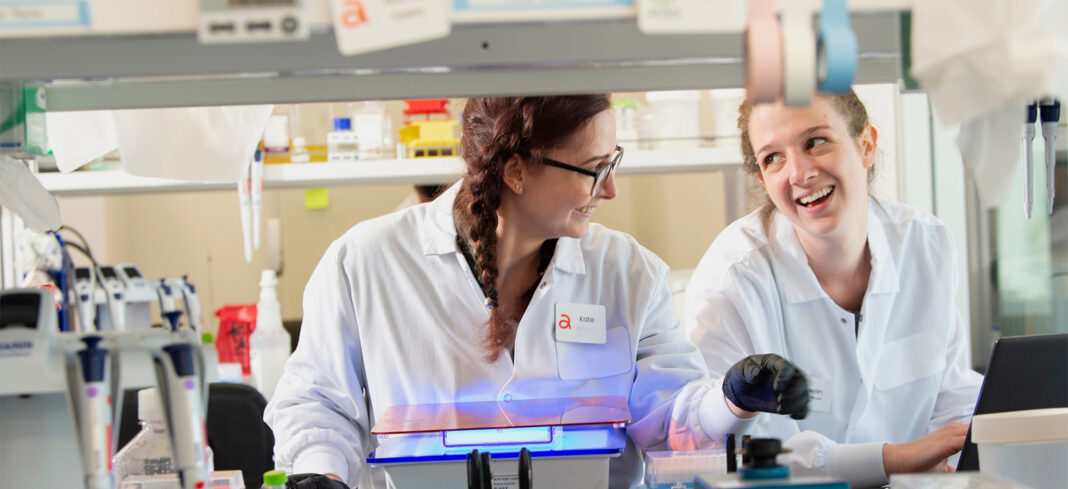
Absci says it is on track to advance its first antibody developed through its generative artificial intelligence (AI)-based platform to IND stage within the next 24 months, after the company disclosed expanded data showing that its antibody models achieved higher rates of binding with antigens than sequences it obtained from two public databases.
In an updated preprint posted on the bioRxiv server, Absci researchers detailed their ability to design new therapeutic antibodies by using the company’s zero-shot generative AI platform to design de novo versions of all three heavy chain complementarity determining regions (HCDR123), the antibody regions most critical to target binding.
The CDR123-design antibodies achieved hit rates ranging from five to 30 times greater than the biological baselines examined—namely more than 100,000 human antibodies randomly sampled from the OAS [Observed Antibody Space] and SAbDab [Structural Antibody Database] databases.
Of the 100,000 sample, half were tested in comparison to Absci’s de novo CDR123-design antibodies and the other 50,000 were compared with Absci’s de novo CDR3-design antibodies, for which the company designed just the HCDR3 from scratch with generative AI methods using trastuzumab and its target antigen, human epidermal growth factor receptor 2 (HER2), as a model system.
Absci says its de novo method achieved a binding rate of 10.6% in HCDR3-design antibodies and 1.8% in HCDR3-design antibodies—results the company said outperformed the random OAS baseline by 4x and 11x, respectively.
“Can you go higher? I think you probably could,” Joshua Meier, the preprint’s corresponding author and Absci’s senior VP and chief AI officer, told GEN Edge. Meier joined with 45 co-authors to revise an earlier version of the preprint initially posted on bioRxiv in January.
Higher binding or “hit” rates of the de novo antibodies could be achieved, he said, by carefully varying the lengths of antibody sequences as measured in amino acids.
Can researchers reach a 100% hit rate in the not-too-distant future?
“If you allow the model to choose the [sequence] length, you might see it going to 30%, 40%, 50% very quickly, which really gives you many different antibodies to choose from when you’re trying to create your drug discovery program,” Meier said.
Room to grow
“Maybe you’re able to approach this 50-90% range. So there is definitely room to grow. One thing that our manuscript is highlighting is that we really have the ingredients to push towards that,” Meier added. “I’m really excited for what the months ahead are going to show us here.”
Absci has already begun to apply its antibody design model in drug development but is not disclosing details of that program.
In its original preprint, Absci detailed how its AI platform succeeded in creating and validating de novo antibodies in silico through the company’s zero-shot generative AI method, which designs antibodies to bind to specific targets without incorporating any training data on antibodies that are known to bind those targets. That forces the model to design the antibody from scratch.
At the time, Absci said the milestone was an important step toward what drug developers have long promised—namely the ability to slash the time it takes to develop new drugs, and thus lower the cost of developing treatments as they reach the market. That reduction could also lead to lower-cost treatments for patients, Absci added.
In the updated preprint, Absci researchers used generative deep learning models to de novo design antibodies against three distinct targets, by screening more than one million antibody variants designed for binding to HER2 using the company’s high-throughput wet lab capabilities.
The data further demonstrated the effectiveness of Absci’s generative AI platform at generating de novo antibodies that bind to a target of interest, according to the company.
Absci said the research carried out since January marked the largest wet-lab validated study in the field of zero-shot generative AI antibody design to date, consisting of hundreds of thousands of measured variants, including over 100,000 baseline sequences.
“Based on these really fast cycle times, both on the modeling front and then screening things in the lab, we can potentially accelerate the candidate generation timelines—the time it takes to go from an idea to a drug candidate. That is also a big focus for us now,” Meier said.
Absci has projected that its zero-shot generative AI platform can cut the time from target identification to the clinic by about two years.
“If you commercialize your drug two years early, that gives you two more years of sales at the end of your patent life,” Andreas Busch, Absci’s chief innovation officer, recently stated on the company’s blog. “Today, whatever target you’re working on, you have to assume that five other companies have also discovered it and are working on it, too. In such cases, a month or two could make the difference between bringing your blockbuster to market and being shut out by a competitor’s patent.”
“If you have a chance of being two years faster, that puts you in a completely different competitive situation,” Busch added.
Earlier this year, Absci also moved to bolster its infrastructure and capabilities in developing an internal pipeline of therapies by opening an Innovation Center in Zug, Switzerland and appointing two Senior Vice Presidents: Christine Lemke, DVM, MBA, SVP of Portfolio & Growth Strategy, and Christian Stegmann, PhD, SVP of Drug Creation.

